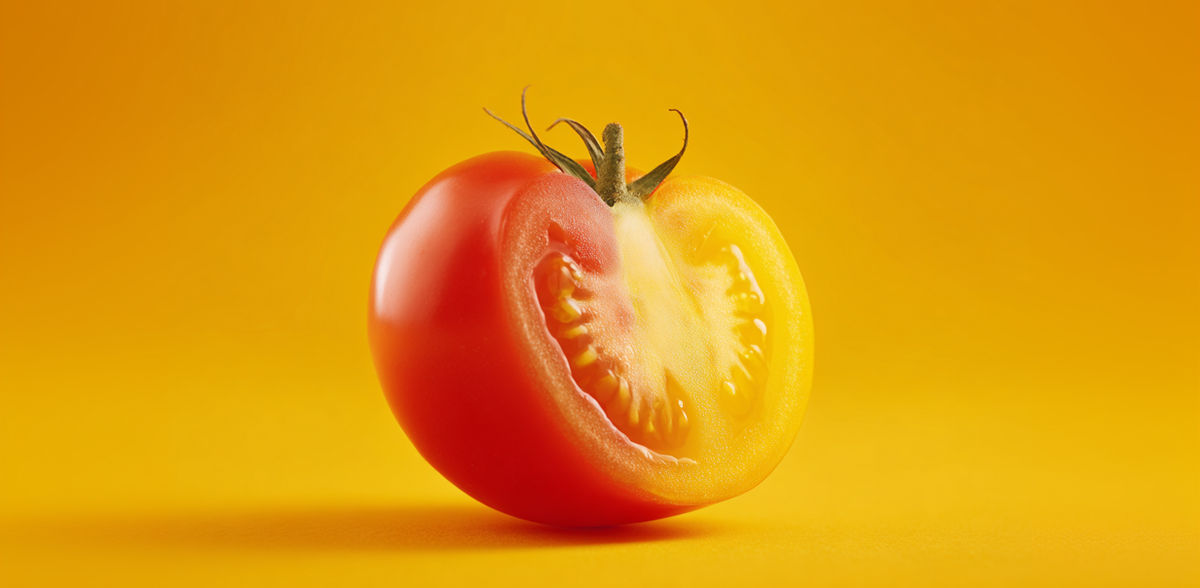Turning tomatoes golden: Scientists engineer camellia flavonols into fruit flesh
New avenues for enhancing the health benefits of common fruit crops
Scientists have decoded the genetic machinery behind the golden petals of Camellia nitidissima and successfully transferred this trait into tomato plants to enhance their nutritional value. By identifying the key flavonols responsible for the flower’s yellow pigmentation, researchers pinpointed five essential genes involved in their biosynthesis. These genes were then introduced into tomato plants using a multigene synthetic biology approach. The engineered tomatoes developed golden-yellow flesh enriched with health-promoting flavonols, compounds known for their antioxidant properties. This breakthrough not only sheds light on a long-standing mystery in plant pigmentation but also opens new avenues for enhancing the health benefits of common fruit crops.
The golden Camellia, renowned for its rare and vibrant yellow blossoms, has long captivated horticulturists. While most Camellia species produce red or white flowers, C. nitidissima stands out with its striking golden hue. However, the exact pigments responsible for this coloration have remained a topic of debate, with both flavonoids and carotenoids proposed as candidates. At the same time, tomatoes—while rich in carotenoids like lycopene—contain only trace amounts of flavonols in their edible flesh. Given the superior bioavailability and antioxidant strength of flavonols such as quercetin, scientists have been searching for ways to enrich these compounds in fruit crops. These challenges prompted the team to explore Camellia's unique metabolic pathways for possible cross-species application.
In a study published on November 7, 2024, in Horticulture Research, researchers from Zhejiang University, the Chinese Academy of Forestry, and Westlake University reconstructed the flavonol biosynthesis pathway of C. nitidissima in tomatoes. The team identified quercetin derivatives as key pigments in the yellow Camellia flowers and isolated five genes responsible for their production. These genes were then introduced into tomato plants through two synthetic biology strategies, resulting in fruits with vivid yellow flesh and significantly elevated flavonol content.
By profiling 23 golden Camellia species, the researchers confirmed that quercetin 3-O-glucoside and 7-O-glucoside are the main pigments behind the golden color. Using dual-platform transcriptomics and gene coexpression analysis, they identified five key genes: CnCHS, CnF3’H, CnFLS1, CnUFGT14, and a MYB transcription factor. The enzyme CnFLS1 demonstrated exceptional catalytic efficiency in producing quercetin. These genes were expressed in Nicotiana benthamiana and stably transformed into tomato, yielding two sets of transgenic lines. The Early-Activation design proved most effective, producing tomato fruits with not only enhanced levels of quercetin derivatives but also Camellia-specific flavonols like camelliaside A and C. These compounds substantially boosted the fruits’ antioxidant capacity, showing promise for health-focused breeding.
“This project bridges ornamental plant biology with food crop enhancement,” said Prof. Pengxiang Fan, corresponding author of the study. “By transferring Camellia’s pigment pathway into tomato, we’ve shown how synthetic biology can be used to awaken hidden metabolic potential and deliver nutritional benefits. These tomatoes don’t just look different—they carry compounds with real health-promoting properties.”
The success of this metabolic reconstruction marks a significant advance in plant synthetic biology. Beyond aesthetic changes, the flavonol-enriched tomatoes have enhanced antioxidant activity, potentially offering better shelf life and health benefits. The findings highlight the value of mining rare plant species for bioactive compounds and applying them in staple crops. As synthetic biology tools become more refined, this approach could transform the development of functional foods and create new possibilities for nutrition-driven agriculture.
Original publication
Lina Jiang, Leiqin Han, Wenxuan Zhang, Yifei Gao, Xiaoyan Xu, Jia Chen, Shan Feng, Zhengqi Fan, Jiyuan Li, Xinlei Li, Hengfu Yin, Pengxiang Fan; "Elucidation of the key flavonol biosynthetic pathway in golden Camellia and its application in genetic modification of tomato fruit metabolism"; Horticulture Research, Volume 12, 2024-11-7
Most read news
Original publication
Lina Jiang, Leiqin Han, Wenxuan Zhang, Yifei Gao, Xiaoyan Xu, Jia Chen, Shan Feng, Zhengqi Fan, Jiyuan Li, Xinlei Li, Hengfu Yin, Pengxiang Fan; "Elucidation of the key flavonol biosynthetic pathway in golden Camellia and its application in genetic modification of tomato fruit metabolism"; Horticulture Research, Volume 12, 2024-11-7
Topics
Organizations
Other news from the department science

Get the food & beverage industry in your inbox
By submitting this form you agree that LUMITOS AG will send you the newsletter(s) selected above by email. Your data will not be passed on to third parties. Your data will be stored and processed in accordance with our data protection regulations. LUMITOS may contact you by email for the purpose of advertising or market and opinion surveys. You can revoke your consent at any time without giving reasons to LUMITOS AG, Ernst-Augustin-Str. 2, 12489 Berlin, Germany or by e-mail at revoke@lumitos.com with effect for the future. In addition, each email contains a link to unsubscribe from the corresponding newsletter.





























































